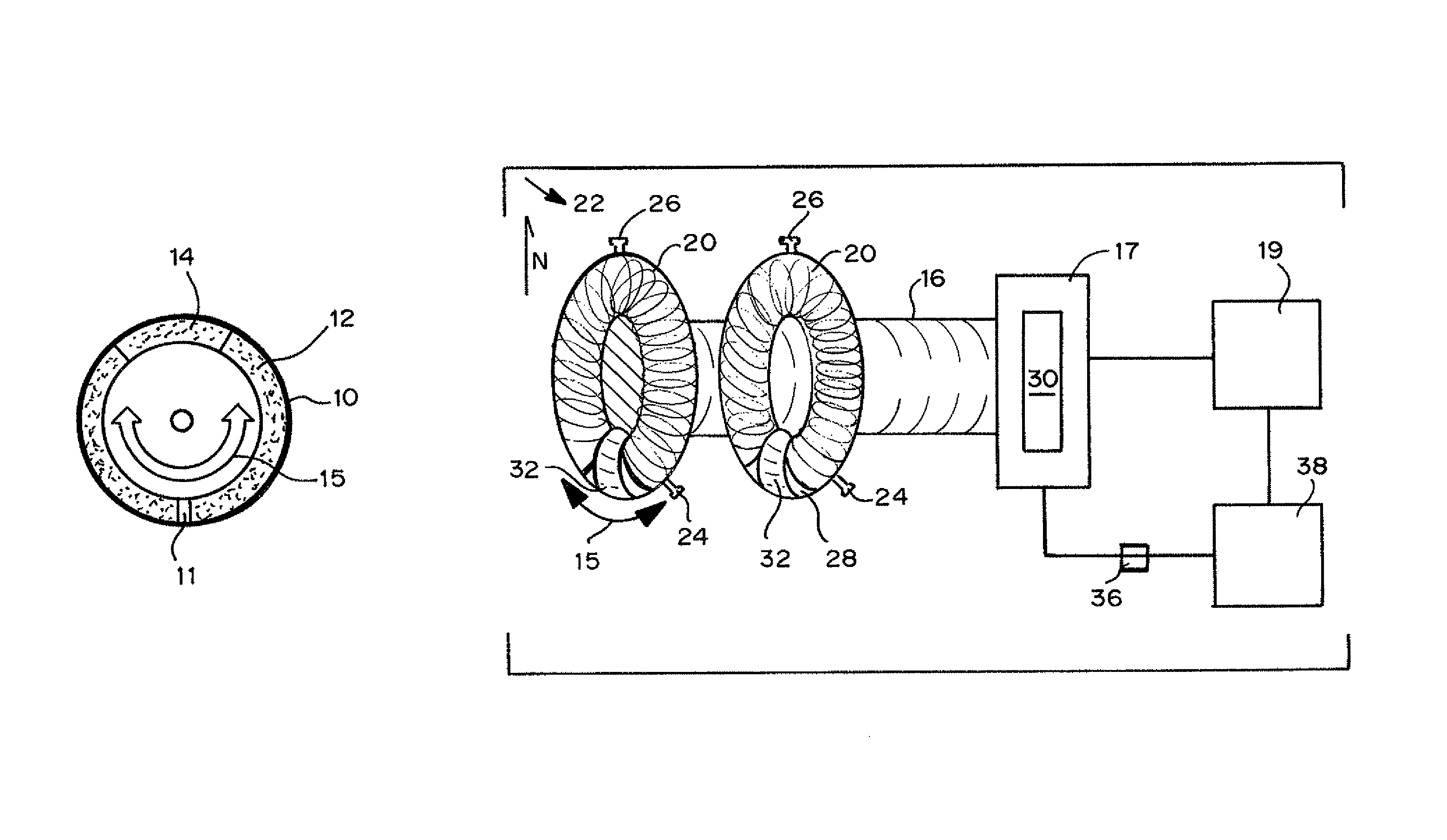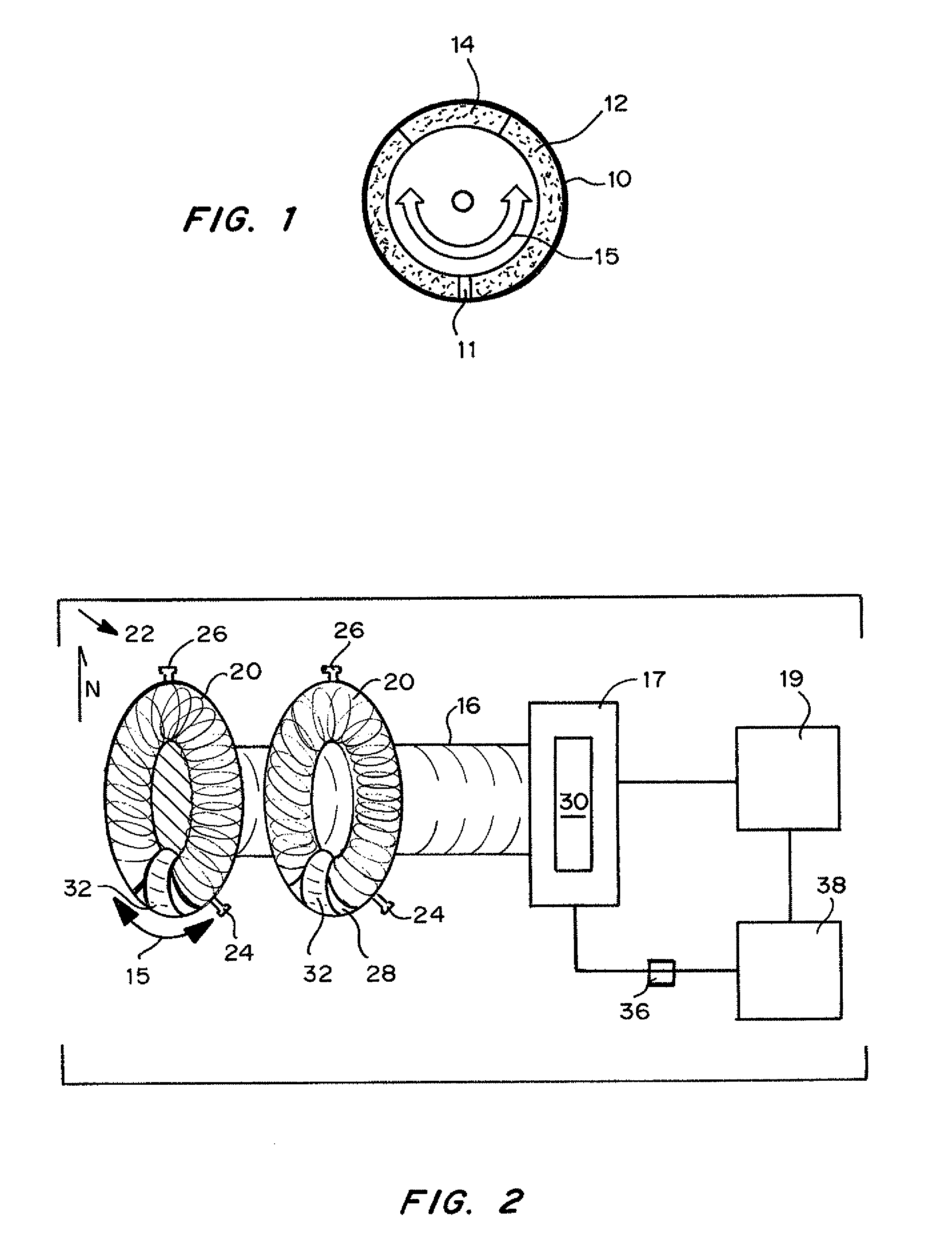Oscillating cell culture bioreactor
a cell culture and bioreactor technology, applied in the field of cell or tissue culture and cell or tissue culture bioreactor systems, can solve the problems of difficult to disperse viable cells throughout 3d scaffolds with complex and diverse architectures low efficiency and spatial non-uniform cell distribution, etc., to facilitate scale-up and automation
- Summary
- Abstract
- Description
- Claims
- Application Information
AI Technical Summary
Benefits of technology
Problems solved by technology
Method used
Image
Examples
example 1
Perfusion Seeding and Culture
[0079]Materials and Methods:
[0080]Cells harvested from bovine calf cartilage were cultured on 3D non-woven fibrous scaffolds by perfusion seeding and culture in the oscillating perfused bioreactor (OPB). The two control groups were otherwise identical constructs seeded and cultured either in spinner flasks (SF) and static petri dishes (ST). The DNA content of constructs sampled on day 4 was quantified to provide an index of cell seeding efficiency. Cross-sectional thickness of constructs sampled on day 14 was quantified to provide an index of construct growth. Cell morphology and extracelluar matrix deposition in 14-day constructs were assessed by safranin-O staining for glycosaminoglycans (GAG).
[0081]Results and Discussion:
[0082]The DNA content of 4-day constructs from the OPB group was significantly higher than the ST group, indicating that the OPB enhanced cell seeding efficiency (FIG. 3A). Cross-sectional thickness of 14-day constructs was significan...
example 2
Perfusion Culture after Seeding
[0083]Materials and Methods:
[0084]Cells harvested from neonatal rat hearts were seeded on 3D porous solid scaffolds by entrapment in MATRIGEL® and then cultured for 8-days statically (ST) or in the oscillating perfused bioreactor (OPB) in either control (CTL) or IGF-supplemented (+IGF) media, Cell viability was quantified by the 3-(4,5-dimethylthiazol-2-yl)-2,5-diphenyl tetrazolium bromide (MTT) assay. Apoptosis was quantified by the terminal deoxynucleotidyl tranferase (TdT)-mediated dUTP nick end labeling (TUNEL) assay. Amounts of cardiac troponin-I (Tn-I) and connexin-43 were assessed by Western blot, and total protein content was quantified by a commercial kit. Contractile amplitude was assessed as percent area change during a contractile cycle by computer based image analysis. Excitation threshold (ET) was assessed by placing constructs between a pair of electrodes to which pacing stimuli were applied at 1 Hz; the voltage at which each impulse was...
example 3
Perfusion Culture after Seeding
[0088]Materials and Methods.
[0089]Cells harvested from neonatal rat hearts were seeded on 3D porous solid scaffolds by entrapment in one of three different hydrogels (i.e. MATRIGEL®, a self-assembling peptide gel, PURAMATRIX®, and fibrin gel) and then cultured for 8 days either statically (ST) or in the oscillatory perfused bioreactor (OPB). To provide an index of culture aerobicity, the molar ratio of lactate produced to glucose consumed (Lac / Glu ratio) was calculated, wherein values of 1.0 and 2.0 indicate purely aerobic and purely anaerobic metabolism, respectively.
[0090]Result and Discussion.
[0091]The Lac / Glu ratio was significantly lower for bioreactor than static cultures of cells (cardiomyocytes) entrapped within 3D porous scaffolds using three different hydrogels (FIG. 5). This result supports the use of the OPE for maintaining aerobicity during culture of large tissue constructs
PUM
| Property | Measurement | Unit |
|---|---|---|
| humidity | aaaaa | aaaaa |
| humidity | aaaaa | aaaaa |
| diameter | aaaaa | aaaaa |
Abstract
Description
Claims
Application Information
 Login to View More
Login to View More - R&D
- Intellectual Property
- Life Sciences
- Materials
- Tech Scout
- Unparalleled Data Quality
- Higher Quality Content
- 60% Fewer Hallucinations
Browse by: Latest US Patents, China's latest patents, Technical Efficacy Thesaurus, Application Domain, Technology Topic, Popular Technical Reports.
© 2025 PatSnap. All rights reserved.Legal|Privacy policy|Modern Slavery Act Transparency Statement|Sitemap|About US| Contact US: help@patsnap.com



